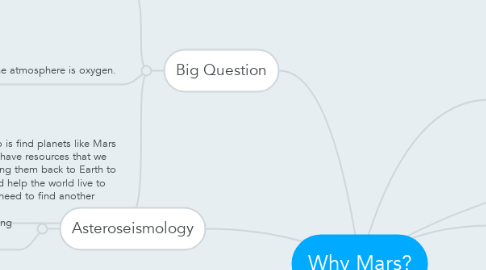Why Mars?
by James Atkinson


1. Asteroseismology
1.1. It is studying the sceismic waves moving through the star.
1.1.1. It helps us learn about the structure of the star.
2. Facts about Keppler 93 b
2.1. It's diameter is about 1.5 times as big as Earth's.
2.2. The mass is about 3.8 times the mass of Earth's.
2.3. The planet is most likely made of iron and rock like Earth.
2.4. It is like a super sized exoplanet of Earth.
3. Big Question
3.1. 97% of Earth's water is in oceans which means that 3% is fresh to drink.
3.1.1. A solution is take water from the oceans and purify it through treatment to make it fresh. This could be a short-term solution that could get us to 2100 when we have enough proof that there are livable planets besides Earth that we could explore.
3.2. 20% of the air in the atmosphere is oxygen.
3.2.1. A solution for this is to plant more plants and stop building buildings that need trees to be chopped down. (personally I think there should be a law for that.) People should have gardens in their backyards with plants. I suggest this because plants need carbon dioxide and they release oxygen and visa-versa with humans.

